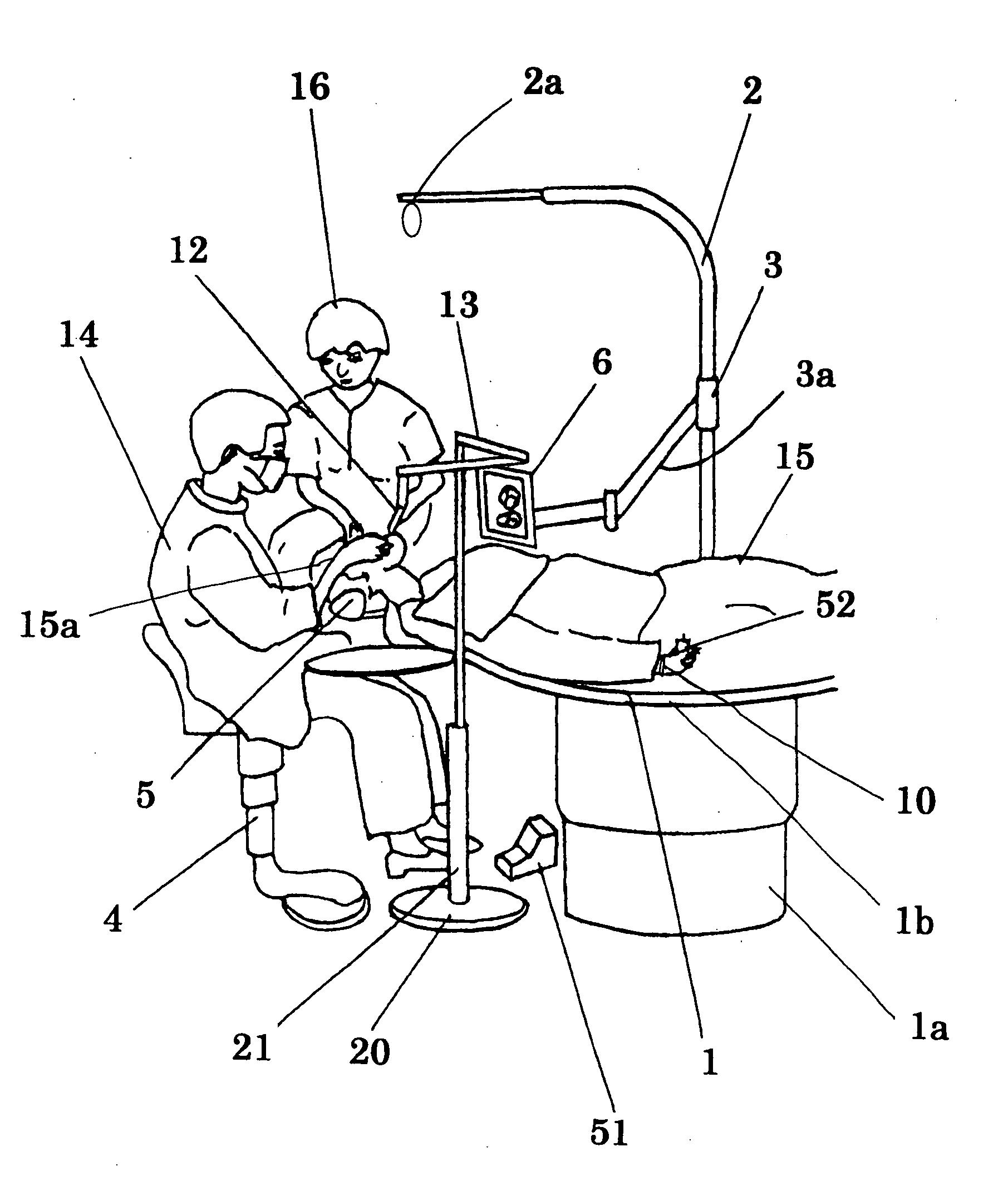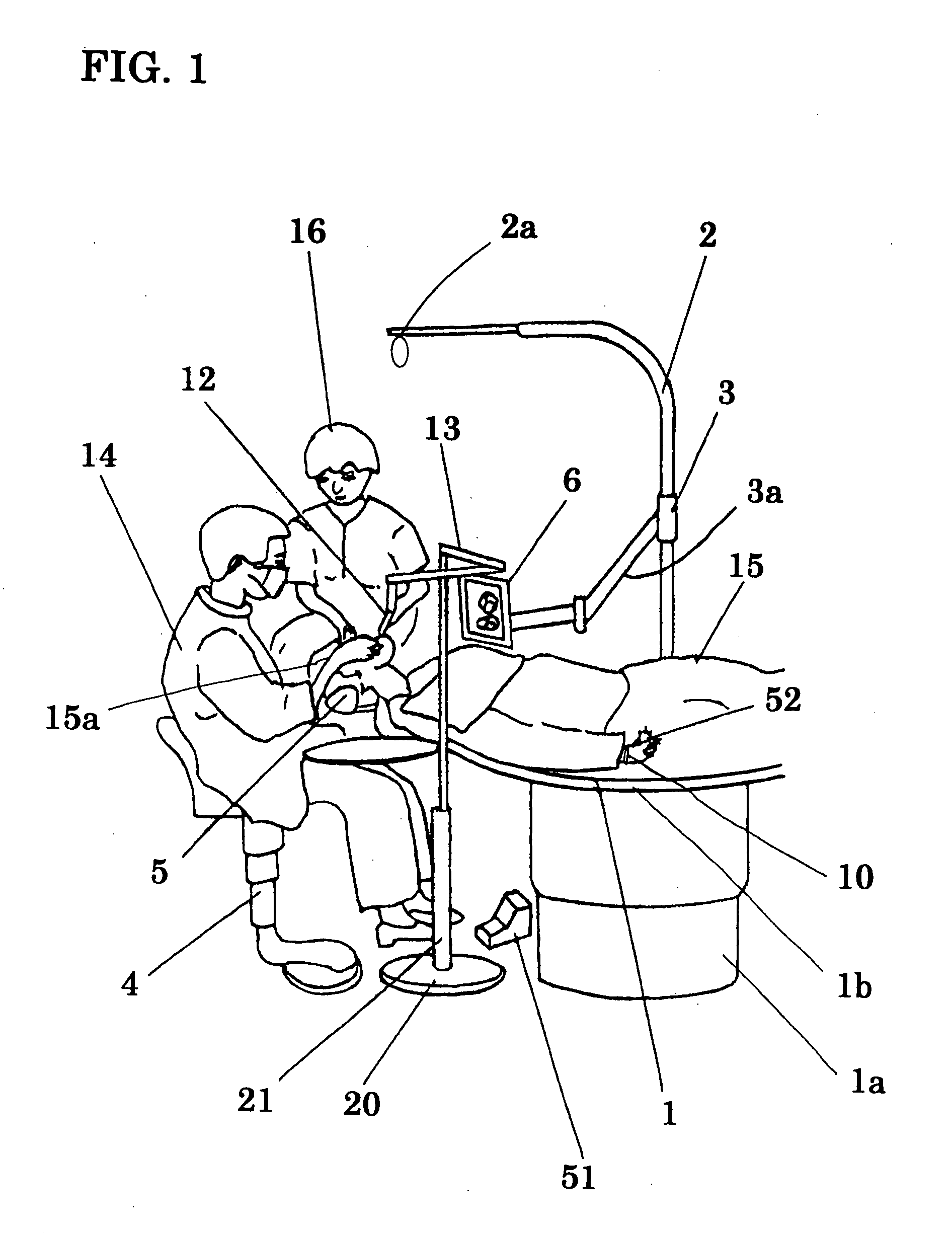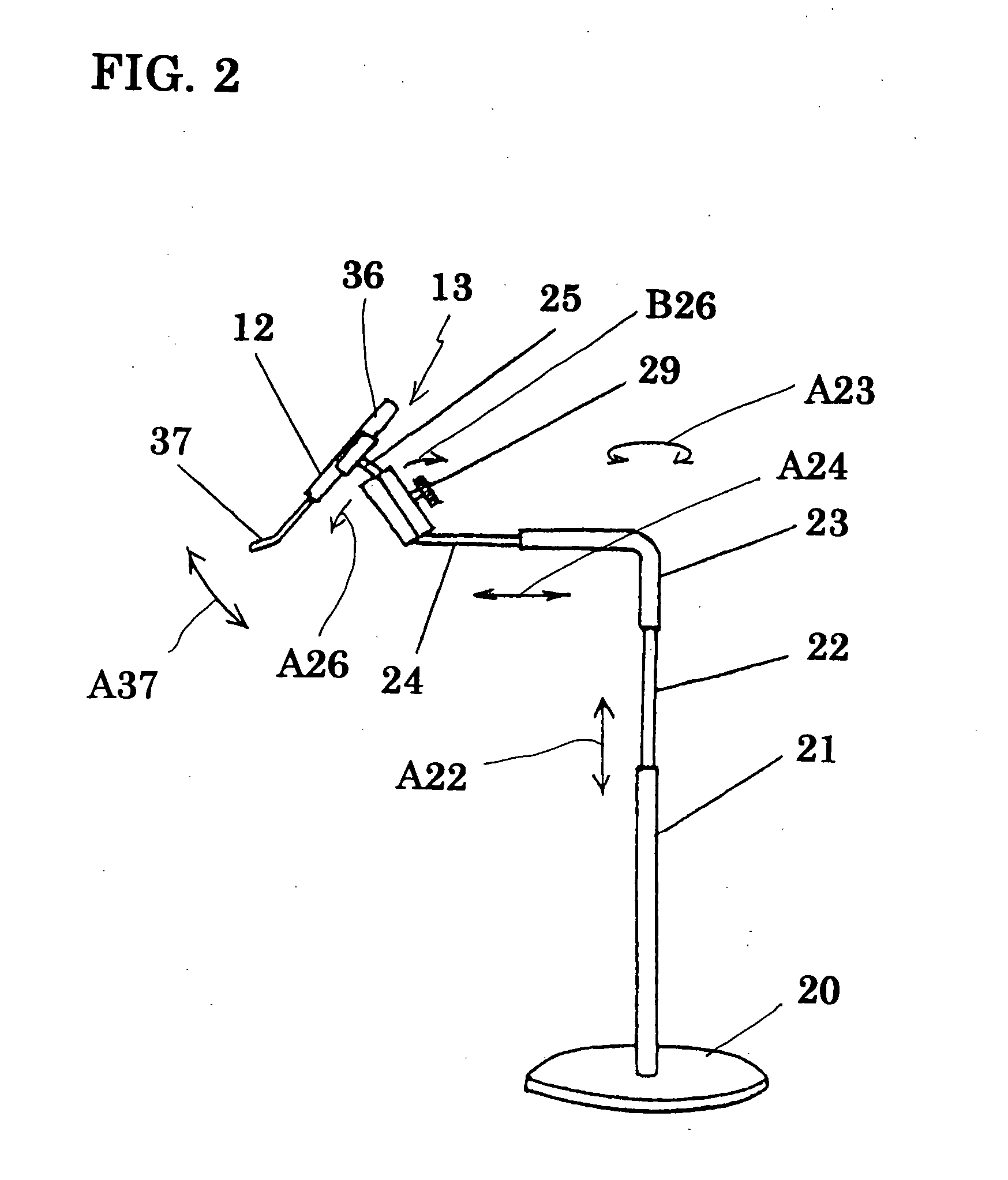Apparatus for dental diagnosis and treatment
a technology for dental diagnosis and treatment, applied in the field of improvement of dental diagnosis and treatment apparatus, can solve the problems of inability to use, eye fatigue becomes outrageous, and the type of treatment is performed with great difficulty
- Summary
- Abstract
- Description
- Claims
- Application Information
AI Technical Summary
Problems solved by technology
Method used
Image
Examples
second embodiment
[0071] Referring to FIG. 7, a second embodiment will be described. The same reference numerals as in FIG. 1 to FIG. 6 represent the same names and functions.
[0072] The difference between this embodiment and the first embodiment is in that a patient-specific mirror 17 and a dental-assistant-specific mirror 18 are provided in addition to the first monitor 6. The patient-specific mirror 17 is installed at a position where the patient 15 lying on his / her back on the dental treatment table 1 can see best, and its angle is adjusted so as to reflect the display of the first monitor 6. For example, the patient-specific mirror 17 is rotatably provided on a connecting member 2b, which is provided at the distal end of the lamp post 2 in the vertical direction, and the height or the inclination angle thereof is adjustable. The patient-specific mirror 17 is located substantially right above the eyes of the patient 15, and is disposed at a position where it can be seen easier than the first moni...
third embodiment
[0075] Referring to FIG. 8, a third embodiment of the present invention will be described. The same reference numerals as in FIG. 1 to FIG. 6 represent the same names and functions.
[0076] The difference between this embodiment and the first embodiment is in that a second monitor 7 for a patient and a third monitor 8 for a dental assistant are provided in addition to the first monitor 6.
[0077] The second monitor 7 is installed at a position where the patient 15 lying on his / her back on the dental treatment table 1 can see best. For example, the second monitor 7 is rotatably provided on the connecting member 2b, which is provided at the distal end of the lamp post 2 in the vertical direction, and the height or the inclination angle thereof is adjustable. The second monitor 7 is located at a position where it can be seen easier than the first monitor 6 by the patient 15, and is positioned substantially right above the eyes of the patient 15.
[0078] The third monitor 8 is disposed at ...
fourth embodiment
[0081] Referring now to FIG. 9 and FIG. 10, a fourth embodiment of the present invention will be described. The same reference numerals as in FIG. 1 to FIG. 8 represent the same names and functions.
[0082] The difference between this embodiment and the first, second and third embodiments is in that a camera 112 having two lenses is used as the intraoral camera, and a two-window monitor 109 is employed as the first monitor.
[0083] The intraoral camera 112 is provided with the camera body 36 and the head portion 37. The head portion 37 is rotatably connected to the camera body 36 via a hinge 38, and an upper surface 37a thereof is provided with a first lens 39, a second lens 40, and some lamps 41. The both lenses 39, 40 are disposed in parallel at a predetermined distance, and their angles are adjusted so that they can capture the images of the identical site to be diagnosed and treated from slightly different directions. The lamps 41 are disposed so that the lenses 39, 40 lie in betw...
PUM
 Login to View More
Login to View More Abstract
Description
Claims
Application Information
 Login to View More
Login to View More - R&D
- Intellectual Property
- Life Sciences
- Materials
- Tech Scout
- Unparalleled Data Quality
- Higher Quality Content
- 60% Fewer Hallucinations
Browse by: Latest US Patents, China's latest patents, Technical Efficacy Thesaurus, Application Domain, Technology Topic, Popular Technical Reports.
© 2025 PatSnap. All rights reserved.Legal|Privacy policy|Modern Slavery Act Transparency Statement|Sitemap|About US| Contact US: help@patsnap.com



